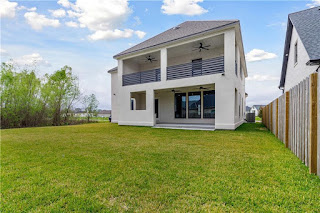More people than ever are showing up to the closing table with cold, hard cash. As of February 2025, nearly one-third of home purchases in the United States were all-cash deals, according to the National Association of Realtors. That statistic might make you wonder if skipping the mortgage and writing a check for the full price of a house is the smarter move. While paying in cash might sound like the fast track to homeownership, the decision is more complex than it seems. Whether you should pay cash or finance your purchase with a mortgage depends on your financial situation, your long-term goals, and the housing market where you plan to buy.
A cash offer means you're using money you already have, with no need for approval from a lender. This can give you an edge in a competitive market, speed up the homebuying process, and save you thousands in closing costs and interest. On the other hand, taking out a mortgage allows you to keep more cash on hand for other priorities and potentially benefit from tax deductions and a stronger credit profile.
If you're thinking about buying a home with cash, you need to be ready with substantial liquid assets. In addition to the purchase price, you'll need to cover closing costs like legal fees and title insurance. The upside is you avoid lender-related fees and monthly mortgage payments. But just because you can pay in full doesn't mean you should. The money used for a home purchase could instead be invested elsewhere or reserved for future financial needs like college tuition, retirement, or emergencies.
Cash buyers also enjoy peace of mind in terms of speed. Without loan underwriting or bank red tape, the transaction can close more quickly. Sellers often favor cash offers because they remove uncertainty and reduce the chances of the deal falling through. When every listing in your target area is receiving multiple offers, a cash bid might be what sets yours apart.
The savings over time can also be significant. When you pay in cash, you're not just cutting out monthly principal and interest payments—you're also avoiding the interest altogether. For example, buying a $425,000 home with cash instead of financing $340,000 with a 30-year mortgage at 6.5 percent could save you more than $430,000 in interest alone over the life of the loan.
However, mortgages come with their own advantages. Taking out a home loan allows you to keep much of your capital free for other uses. You might prefer to invest those funds in assets with higher returns, or simply want to maintain a cushion of liquidity in case of job loss or major repairs. Plus, mortgage interest is often tax-deductible, which can help reduce your tax burden if you itemize. On-time mortgage payments can also boost your credit score, which is helpful for future borrowing.
The decision becomes more nuanced when you consider the full cost of financing. On a $400,000 home with a 20 percent down payment and a 7 percent interest rate, you could end up paying over $446,000 in interest over 30 years, bringing your total cost to more than $766,000. That doesn't include closing costs, which can tack on another 2 to 5 percent of the purchase price.
At the same time, a cash purchase that drains your savings might leave you financially exposed. You still have to pay property taxes, homeowners insurance, maintenance, and utilities—and you'll need an emergency fund for unexpected expenses. It's important to evaluate how much money you'll have left over after the purchase and whether it will be enough to meet your ongoing needs and goals.
Choosing between cash and a mortgage isn't just about dollars and cents. It's also about strategy and peace of mind. If you want to keep your money invested or available for other purposes, a mortgage might be the better choice A. If you're debt-averse or want to win a bidding war, paying in full could be the right move.
There is no one-size-fits-all answer. The best option comes down to what works for you—your finances, your market, and your priorities. Some buyers will find comfort in owning their home outright, while others would rather leverage their capital for long-term growth. In today's market, where mortgage rates remain elevated, the decision becomes even more personal. As housing analyst Jeff Ostrowski put it, what looks smart on paper may not always feel right in real life. And when it comes to where you live, both logic and emotion deserve a seat at the table.
Click Here For the Source of the Information.



